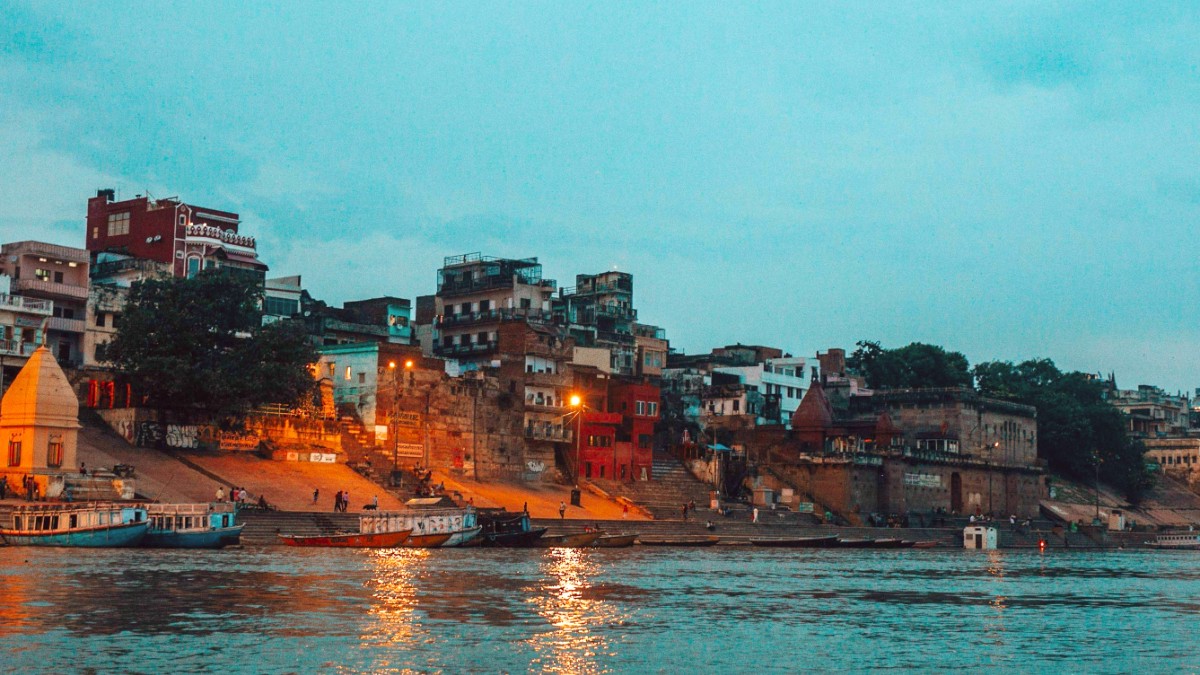
Uttar Pradesh, India
Winter (October to March) provides agreeable weather, with daytime temperatures from 20°C (68°F) to 30°C (86°F). Nights, notably in December and January, can become chilly, dropping to 5°C (41°F) or even lower. Rainfall is minimal, and skies are typically clear.
Summer (April to June) brings intense heat, with temperatures soaring to 30°C (86°F) to 45°C (113°F) or higher. May and June are the hottest months, with very little rain. Direct sun exposure becomes difficult.
High Season (October to March) is the busiest time for visitors. The weather is ideal for sightseeing. Many important festivals occur, offering unique cultural experiences.
Shoulder Season (September, March-April) presents fewer crowds and potentially lower prices. Low Season (May to August) sees the fewest tourists and lowest prices, but intense heat or heavy monsoons characterize this period.
High humidity & heavy rains
River levels rise; boat rides may suspend.
Localized flooding in low-lying areas.
Extreme heat & dry conditions
Attractions less crowded.
Risk of heatstroke and dehydration.
Pleasant & cool weather
Ideal for sightseeing and festivals.
Higher prices and crowds.
Heavy rains during monsoon (July-September) can lead to localized flooding in low-lying areas, especially near the ghats. This can disrupt movement around the city. River levels in the Ganges rise, which may lead to boat tour suspensions for safety reasons.
The intense summer heat (April-June) brings health risks. Plan your day to avoid prolonged sun exposure during peak hours (mid-morning to late afternoon). Stay hydrated, wear light clothing, and seek shade frequently. Early mornings and late evenings present comfortable times for outdoor exploration.
October to March for comfortable weather and clear views.
Early morning or late evening year-round to avoid crowds and heat.
Early November for Dev Deepawali, or October/November for Diwali.
Sunrise and sunset offer dramatic light throughout the year.
The cooler months are conducive to outdoor sessions, especially near Assi Ghat.
Travelers wishing to visit India, including Varanasi, must meet specific visa and entry regulations. These vary based on nationality and trip purpose.
The e-Visa is highly convenient due to its online application. Most foreign nationals need a visa to enter India.
Citizens of over 160 countries are eligible for the e-Visa. Verify eligibility on the official portal.
Varanasi presents experiences for every budget, from very economical to luxurious.
The local currency in Varanasi, and throughout India, is the Indian Rupee (INR), symbol ₹. Exchange rates fluctuate; as of early 2024, approximately 83 INR equals 1 US Dollar (USD).
ATMs are widely available, especially in the Cantonment area and near major commercial streets like Godowlia and Lanka. Use ATMs associated with major banks (SBI, ICICI Bank, HDFC Bank, Axis Bank). Inform your home bank of travel plans to help avoid card freezes.
Daily average cost: 800 - 1,900 INR (~$10-23 USD)
Accommodation: 300 - 800 INR (hostel dorm/basic guesthouse)
Avoid expensive private tours; walk or use local transport.
Daily average cost: 3,400 - 8,100 INR (~$41-98 USD)
Accommodation: 2,000 - 5,000 INR (mid-range hotel with AC)
Avoid frequent fine dining; mix with local eateries.
Daily average cost: 8,100 - 29,000+ INR (~$98-350+ USD)
Accommodation: 5,000 - 20,000+ INR (luxury hotel/heritage property)
No major restrictions; enjoy premium services.
| Category | Budget Traveler (INR) | Mid-Range Traveler (INR) |
|---|---|---|
| Accommodation | 300 - 800 | 2,000 - 5,000 |
| Meals | 200 - 500 | 800 - 1,500 |
| Transportation | 100 - 300 | 300 - 800 |
Awareness of common concerns and preparation with preventive measures are good steps for your visit.
Measles-Mumps-Rubella (MMR), Diphtheria-Tetanus-Pertussis (Tdap), Polio, annual Flu shot.
Highly recommended for all travelers to India.
Strongly advised for a bacterial infection from food/water.
Consult a travel health clinic or your doctor at least 4-6 weeks before your trip.
Rabies: Consider if you plan prolonged outdoor activities or expect contact with animals in rural areas. Japanese Encephalitis: Consider if spending a month or more in rural areas during monsoon season.
Yellow Fever: A vaccination certificate is required if arriving from or transited through a country with a risk of Yellow Fever transmission.
Drink only sealed bottled water, avoid ice cubes, eat hot/freshly cooked food. Carry Anti-diarrhea medication and oral rehydration salts.
Use Insect repellent with DEET or picaridin. Wear long sleeves/pants during dawn/dusk. Sleep under mosquito nets if needed.
Stay hydrated with bottled water/electrolyte drinks. Avoid peak sun hours (10 AM - 4 PM). Wear light clothing and a Wide-brimmed hat.
Varanasi is generally safe for tourists during the day. However, like any crowded destination, awareness helps prevent issues.
Varanasi has hospitals ranging from public university hospitals to private facilities. Pharmacies are widely available.
Sir Sunderlal Hospital (BHU), Heritage Hospitals, Shubham Hospital. Private hospitals offer better facilities.
A comprehensive Travel insurance policy is highly recommended. Consider SafetyWing or Insubuy.
If flights are delayed or canceled, AirHelp may assist with compensation.